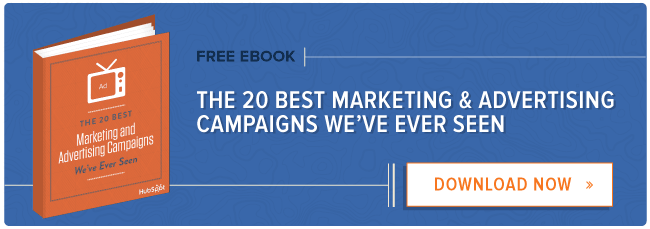Every now and then we see discussions proclaiming a profound change in the way we design and build websites. Be it progressive enhancement1, the role of CSS2 or, most recently, web design itself being dead3. All these articles raise valid points, but I’d argue that they often lack objectivity and balance, preferring one side of the argument over another one.
These discussions are great for testing the boundaries of what we think is (or is not) possible, and they challenge how we approach our craft, but they don’t help us as a community to evolve together. They divide us into groups and sometimes even isolate us in small camps. Chris Coyier has published a fantastic post4 recently covering the debate on the role of CSS in light of growing popularity of React.js, extensively and objectively. That’s the quality discussions we need, and that’s what keeps us evolving as a growing and maturing community.
Web technologies are fantastic — we all agree on this. Our tools, libraries, techniques and methodologies are quite fantastic, too. Sometimes they are very different and even contradictory, but they are created with the best intentions in mind, and often serve their purpose well in the specific situations they were designed for. Sometimes they contain mistakes, but we can fix them due to the nature of open source. We can submit a patch or point out solutions. It’s more difficult, but it’s much more effective.
There are a lot of unknowns to design and build for, but if we embrace unpredictability5 and if we pick a strategy to create more cohesive, consistent design systems6, we can tackle any level of complexity — in fact, we do it every single day. We solve complex problems by seeking solutions, and as we do, we make hundreds of decisions along the way. Yet sometimes we fall into the trap of choosing a solution based on our subjective preferences, not objective reasoning.

We tend to put things into buckets, and we tend to think in absolutes. Pro carousels or anti carousels; pro React.js or anti-React.js; for progressive enhancement or against it. But the web isn’t black and white — it’s diverse, versatile, tangled, and it requires pragmatism. We are forced to find reasonable compromises within given constraints, coming from both business and UX perspectives.
Tools aren’t good or evil; they just either fit a context or they don’t. Carousels can have their place when providing enough context to engage users (as Amazon does). React.js modules can be lazy-loaded for better performance, and progressive enhancement is foundational for making responsive websites really8, really9 fast. And even if you have extremely heavy, rich imagery, more weight doesn’t have to mean more wait10; it’s a matter of setting the right priorities, or loading priorities, to be precise.
No, web design isn’t dead. Generic solutions are dead.11 Soulless theming and quick skinning are dead. Our solutions have to be better and smarter. Fewer templates, frameworks and trends, and more storytelling, personality and character. Users crave good stories and good photography; they’re eager for good visuals and interesting layouts; they can’t wait for distinctive and remarkably delightful user experiences. This exactly should be our strategy to create websites that stand out.
There are far too many badly designed experiences out there, and there is so much work for us to do. No wonder that we are so busy with our ongoing and upcoming projects. Proclaiming our craft to be dead is counter-productive, because we’ve shown ourselves and everybody out there what we are capable of. The last fifteen years of web design were nothing if not outstanding in innovation and experimentation. And it’s not about to stop; that’s just not who we are.
If we can’t produce anything but generic work, other creatives will. The web will get better and it’s our job to make it better. It won’t be easy, but if we don’t adapt our practices and techniques, we’ll have to give way to people who can get it done better than we can — but web design itself isn’t going anywhere any time soon.
It’s up to us to decide whether we keep separating ourselves into small camps, or build the web together, seeking pragmatic solutions that work well within given contexts. We might not end up with a perfect solution every time, but we’ll have a great solution still; and more often than not it’ll be much, much better than the solution our client came to us for in the first place.
(og, ms)
Footnotes
- 1 http://tomdale.net/2013/09/progressive-enhancement-is-dead/
- 2 https://medium.com/seek-ui-engineering/the-end-of-global-css-90d2a4a06284
- 3 http://mashable.com/2015/07/06/why-web-design-dead/
- 4 https://css-tricks.com/the-debate-around-do-we-even-need-css-anymore/
- 5 http://timkadlec.com/2015/06/thriving-in-unpredictability/
- 6 http://atomicdesign.bradfrost.com/chapter-1/
- 7 https://www.flickr.com/photos/empty_quarter/12108068015/
- 8 https://www.filamentgroup.com/lab/performance-rwd.html
- 9 http://www.smashingmagazine.com/2014/09/08/improving-smashing-magazine-performance-case-study/
- 10 https://www.filamentgroup.com/lab/weight-wait.html
- 11 http://www.smashingmagazine.com/2015/07/06/hunt-for-the-webs-lost-soul/
The post “Web Design Is Dead.” No, It Isn’t. appeared first on Smashing Magazine.
“Web Design Is Dead.” No, It Isn’t.
http://www.smashingmagazine.com/2015/07/08/web-design-is-dead-no-it-isnt/
http://rss1.smashingmagazine.com/feed/
Smashing Magazine
For Professional Web Designers and Developers
Powered by WPeMatico



 The Golden Age of Advertising, that twenty-year spell running through the fifties and sixties, changed how we market everything, pushing beyond merely being clever or descriptive to thinking through how the audience interacts with an ad, and how empirical research can drive its development.
The Golden Age of Advertising, that twenty-year spell running through the fifties and sixties, changed how we market everything, pushing beyond merely being clever or descriptive to thinking through how the audience interacts with an ad, and how empirical research can drive its development.